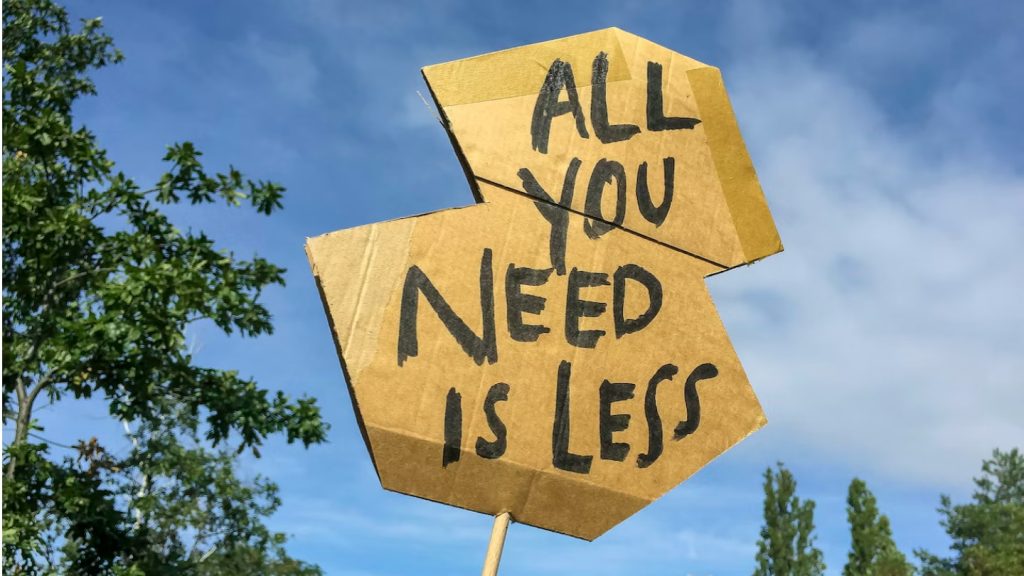Black Friday Sale – 20% off sitewide until 3rd December – Use code BLACKFRIDAY20 at the checkout
- Free shipping on every order
- Same day dispatch
- Price beat guarantee
Menu
Black Friday Sale – 20% off sitewide until 3rd December – Use code BLACKFRIDAY20 at the checkout
Blog A Guide to Running an Eco-Friendly Event: From Planning to Execution

Eco-friendly events are events that promote and use sustainable systems to lower their environmental impact. Events, whether large or small, have the potential to create significant waste of resources and energy, which is why steps must be taken to make them as eco-friendly as possible.
Sustainable event planning is the key to hosting an eco-friendly event, as it takes time and effort to ensure the proper systems are in place to lower the environmental and carbon footprint of the event.
To help you make your next event as eco-friendly as possible, we compiled all the information you need to know, including foundational event practices, waste management solutions, energy conservation, and eco-friendly access management solutions.
Let’s get into it!
Running an eco-friendly event starts with the planning, as you need to work out all the finer details before you run the actual event.
Every event needs a venue, and you can start your eco-friendly planning here. Choosing a sustainable venue requires you to do your due diligence and obtain key information about the venue from its management team.
Checking whether the venue uses sustainable energy sources, asking about its waste policy, and checking to see if internal processes use as little energy as possible are great ways to see if the venue in question is eco-friendly. You can also ask whether the venue has received an eco-certification from its local council or an environmental organisation, as this is a great indicator that it is a sustainable venue.
Another core part of the planning stage is budget setting, and you should aim to make this as sustainable as possible. Green budget setting involves making mindful decisions to minimise environmental impact, particularly focusing on how you are going to minimise waste.
To help inform your budget and venue choice, we recommend calculating the carbon footprint of your event. To do this, you need to collect or project data on the event’s activities and use emissions factors to convert them into a CO2 equivalent, which will show you your carbon footprint. This can be tricky to do on your own, so you may want to enlist the help of a professional to measure the potential emissions of the event.
Finally, to help you ensure every aspect of your event is as eco-friendly as possible, plan to put together a dedicated green team who are knowledgeable and dedicated to making the event as eco-friendly as possible.

Organising an eco-friendly event is a difficult task to do on your own, which is why you need to assemble a dedicated sustainability team to help you. Creating such a team will allow you to maximise the sustainability of the event, as you can delegate certain tasks and research to different members of the event to ensure every factor is covered and that your overall environmental impact is as small as possible.
If you already have a team of eco-warriors at your disposal, this should be an easy task. However, if you don’t, there are several strategies you can undertake to help you put together your dream team.
Appointing a sustainability coordinator is a great first step, as they can oversee all other team members and ensure the group works smoothly to promote eco-friendly practices at your event. This should be someone who is knowledgeable about sustainability practices and can also confidently lead a team of people.
For the rest of your team, you might want to consider conducting eco-ambassador training. The purpose of this training is to educate them on how to best run an eco-friendly event, and also give them practical tools and policies they can implement to help them do so.
To help the core members of your eco-team even further, it may be worth recruiting green volunteers to help work the event. They can assist your team on the ground by ensuring that all sustainability policies are properly carried out on the day of the event, and help to promote sustainability to the event-goers.
If you are going to all the effort of making your event as sustainable as possible, why not have your hard work recognised by obtaining an eco-certification? Eco-certifications are official badges or certificates that confirm your event has met all the requirements of being eco-friendly and has taken significant steps to lower its environmental impact.
Standards to meet these certifications usually include a low carbon footprint, low waste production, and sustainable energy use. To prepare for the certification process, make sure you have implemented or plan to implement these processes – you may want to do this by conducting an environmental impact assessment.
Obtaining these certifications can be highly advantageous, and the benefits extend beyond having your hard work recognised. Certifications such as ISO20121 or a carbon-neutral event certificate validate and legitimise your event’s sustainability efforts and prove to eventgoers that you have the proper systems in place.
Additionally, working towards receiving one of these certifications will push you to increase your sustainability efforts and ensure you have covered all your bases to become an eco-friendly event.
One of the key ways an event can become more eco-friendly is by reducing its overall waste output. Not only does waste reduction lower your environmental footprint, as you are minimising pollution and conserving resources, but it also makes event clean-up a lot easier.
While it might seem ambitious, one of the best ways you can minimise waste is by implementing a zero-waste initiative for your event, as this will encourage staff and event-goers to do their part to bring down waste as much as possible. Easy ways to encourage zero waste include setting up composting and recycling systems, as this allows your waste to be repurposed and thus lowers its environmental impact. You can also opt to use biodegradable materials at your event, as these materials reduce waste by slowly breaking down and going back into the earth once used.
Another great strategy is to have solid processes in place to help you manage any waste that does come your way as a result of the event. For example, sorting your waste will help you to quickly determine what can be repurposed and salvaged instead of automatically sending it to the landfill.
Having clearly marked bins for waste, recycling, and compost, accompanied by clear guidelines as to what belongs in each bin, will help eventgoers to easily sort the waste for you. You can also recommend that eventgoers take any materials they think can be repurposed at home with them and ask them to upcycle them.
You can also see if there are any programs available to you that will allow you to recycle materials not traditionally accepted by most recycling programs. For example, in conjunction with TerraCycle, The Wristband Co. offers a zero-waste recycling program that accepts non-traditional items such as coffee capsules and stationery waste.
If your event is likely to produce a lot of e-waste, look into repurposing this by donating spare parts or unneeded devices at the end of the event to a charity or repurposing firm that specialises in digital waste, so that it can be distributed back out into the community.
On the day (or days) of your event, you can further promote sustainability by reducing the production of waste. There are several simple ways you can do this; it just requires a little bit of planning ahead.
One of the more popular ways to reduce waste production is by replacing all single-use plastics with compostable or biodegradable alternatives. This includes dishes, cutlery, cups and even name badges.
Additionally, when trying to minimise waste production, technology is your best friend. Technology supports zero-waste goals by allowing you to ditch paper-based materials to communicate with eventgoers. Typically, event-specific posters and signs go to waste once the event is over, so by using a digital alternative, you bypass waste production altogether.
Furthermore, if you are running a food-related event, there are extra waste production steps you can take. For example, you can use bulk condiment stations rather than individual packets to cut down on plastic waste, or you can give out reusable cups at the event that attendees can take home with them. Finally, don’t let any of the leftover food go to waste; instead, look into food donation programs in your area where you can donate any leftovers.
Even when your event is over, there are still steps you can take to become more eco-friendly and promote sustainability. Conducting an environmentally responsible cleanup is of the utmost importance if you want to minimise your event’s environmental footprint.
There are several strategies you can put in place to help you achieve an eco-friendly cleanup. The most obvious is by ensuring that any cleaning products used during the breakdown are biodegradable and eco-friendly, which is safer for your staff and the environment.
You can also put the call out to volunteers to help pick up and sort any litter left behind, and if you can implement a proper waste sorting system, these volunteers can ensure that all litter is disposed of correctly.
If possible, why not get event attendees involved too? Asking them to get involved with litter pick up and waste sorting as they leave the event will not only further promote your sustainable goals, but will reduce excess litter and make sure that waste production is minimised.

Choosing the right source of energy for your event is a fantastic way to promote sustainability and lower your carbon footprint. The key consideration here is to be energy efficient. You don’t want to be wasting power, as it drives up your carbon footprint and your energy bill at the end of the event.
A good way to make your event energy efficient is by opting for renewable energy sources. These are sources of energy that are easily replenished and don’t rely on environmentally detrimental sources of fuel.
A popular renewable energy source is solar panels, which you can use to power just about any part of your event, whether it be stages, food trucks, information stands, or speakers. We also recommend looking into energy-efficient lighting equipment, especially LED technology, as this is a great way to cut down on your energy consumption.
During the event, you can also track and monitor your energy consumption and usage to ensure you are hitting your targets. Investing in meters or energy management software may be worth it in the long run to make sure you are minimising your energy usage and therefore your overall carbon footprint.
Another resource you should aim to conserve at any event is your water. Water is a precious resource, and you should make appropriate efforts to reduce your usage as much as possible.
Simple steps you can take at your eco-friendly event to reduce water usage include installing low-water water refill stations for event attendees and staff, and implementing greywater recycling systems so that excess water can be repurposed.
A fantastic piece of water-conserving technology you may also wish to consider is low-flow fixtures. These are toilets, showerheads, and hand basins with reduced pressure. They use significantly less water and are a great way to ensure that there isn’t any waste.
Conserving water at your event may seem like a daunting task, as water is a necessity that all events and event goers need. However, it is relatively straightforward if you put some time and effort into planning. By implementing thoughtful systems and eco-friendly technologies, you can help to minimise water consumption while still providing enough for your attendees. The difference is that there isn’t any wasted water; rather, attendees simply use only what they need.
Finally, one of the best ways to conserve resources at your event is to know exactly how much you need to operate sustainably and work to not exceed this. You can do this by calculating your event’s carbon footprint and using this information to make cuts and monitor certain factors to reduce your environmental footprint.
There are several methods you can use to calculate and reduce your emissions. You can purchase many different emissions calculation tools that simply require you to input data about your event, so that they can produce a precise calculation of your emissions and carbon footprint.
If the calculation reveals that your carbon footprint is higher than you would like, you can look into purchasing a carbon offset. This involves investing in a project or activity that lowers carbon emissions in our air to “offset” any emissions that you might produce.
However, if you don’t want to purchase a carbon offset, you can use the data you calculated to help you figure out where you might be producing excess emissions, and adapt carbon-lowering and eco-friendly strategies to help you bring your overall emissions down. You can do this at any point in the event’s lifecycle, whether it be during the event itself, during set-up and planning, or even during the supply chain process when you are manufacturing equipment for your event.
An area that many event organisers overlook when it comes to planning an eco-friendly event is access control and the materials used for this. Putting some thought into the wristbands administered to event goers can help you to easily reduce your environmental footprint and production of waste.
Traditionally, events use plastic wristbands for event access control; however, there are many other eco-friendly options. This includes biodegradable wristbands that slowly break down over time, wristbands made from recycled plastic, and even wristbands made from innovative seed paper.
Here at The Wristband Co., we offer our clients several environmentally friendly wristband options. This includes our eco-friendly fabric wristbands made from 100% post-consumer polyester, or the Go Green wristband, which are fully recyclable, biodegradable and compostable.
Other eco-friendly wristband materials that aren’t plastic, such as organic cotton or bamboo fibre, represent the latest advancement in sustainable event identification materials.
The core factor in determining whether an event wristband is environmentally responsible is whether it is made from sustainable materials.
Recent developments in the product development field have allowed several cutting-edge and environmentally responsible materials to emerge that can be used for event wristbands.
For example, a new material made from bamboo fibre has recently exploded onto the market. This is a fabric-like material that is made entirely from bamboo pulp. It is durable and comfortable against the skin, and can easily have information printed onto it, making it a great choice for a sustainable wristband.
Additionally, some manufacturers opt for organic cotton, which is cotton grown without any synthetic fertilisers or pesticides. Cotton is extremely soft yet durable, and combined with the ease with which you can print QR codes or information onto the fabric, it is a popular choice for sustainable wristbands.
Finally, recycled PET plastic is another fantastic sustainable option. While this material is made from plastic, the plastic used to create the material is 100% recycled from old bottles and containers. It is extremely durable and moisture resistant, making it an ideal material to be used for access control solutions for events.
There are also some additional envelope-pushing sustainable wristband materials currently in the works or in the beginning stages of entering the market. These include cork-based options, plastics derived from algae, and plant-based dyes, which can be used in the printing process of wristband creation.
Unfortunately, event wristbands tend to be single-use products, so you need to put some thought into how you are going to implement an environmentally responsible end-of-life management strategy to reduce environmental impact.
One of the simplest strategies is to opt for biodegradable wristbands, as these break down over time and eventually produce no waste. However, if this isn’t an option, perhaps look into upcycling initiatives in your area that can take the wristbands and repurpose them into new products for consumers.
Recycling your wristbands is another way to sustainably manage any waste they may produce. Choosing a manufacturer that has its wristband recycling program is an excellent way to ensure your wristbands don’t go to waste.
For example, here at The Wristband Co., our “Wristband Take Back” program allows customers to return their wristbands so that they can be recycled for another purpose, which significantly reduces the waste and environmental footprint of the event in question.


We all need to play our part in protecting the environment, which is why hosting eco-friendly events is no longer a goal; it is a requirement.
There are many different ways you can host an eco-friendly event; it just requires some dedication and planning. From reducing waste output by having appropriate systems in place, conserving water by investing in sustainable technologies, and using renewable energy sources, you can easily bring down the carbon footprint of your event without compromising the experience of your attendees.
Additionally, opting for eco-friendly event materials, such as access wristbands, can also help you to host a more sustainable event. This is perhaps the easiest way to ensure your event is environmentally friendly, as there are so many products on the market, such as The Wristband Co.’s range of eco-friendly fabric and Go Green wristbands, as well as their Take-Back program to recycle your wristbands.
If you’re planning an event and want to make it as eco-friendly as possible, get in touch with The Wristband Co. today for all your eco-friendly event management needs.
You can chat to one of our friendly team members by phone on 08 8363 4850, or send an email to [email protected].


Join our mailing list to receive product information, endless inspiration and 10% off your next order!


Monday – Friday 8:30 AM-8:30 PM
Saturday 10:00 AM-5:00 PM
Sunday CLOSED
38 Little Rundle Street Kent Town SA 5067
08 8363 4850
ABN: 62 239 772 879
The Wristband Co. is located on the traditional lands for the Kaurna people, and we respect their spiritual relationship with their Country. We also acknowledge the Kaurna people as the custodians of the Adelaide region and that their cultural and heritage beliefs are still as important to the living Kaurna people today.
Payments Accepted